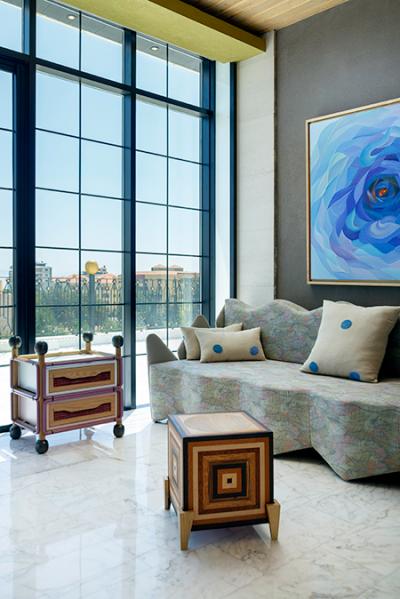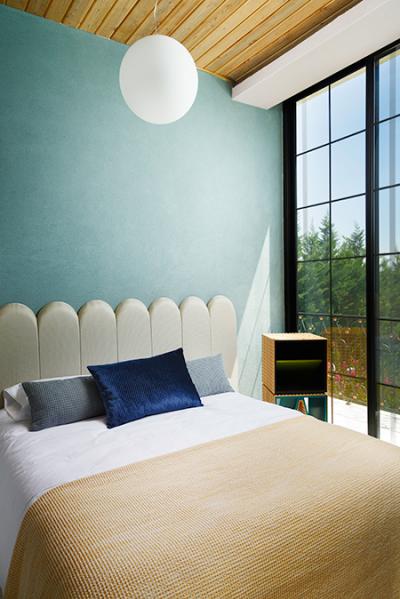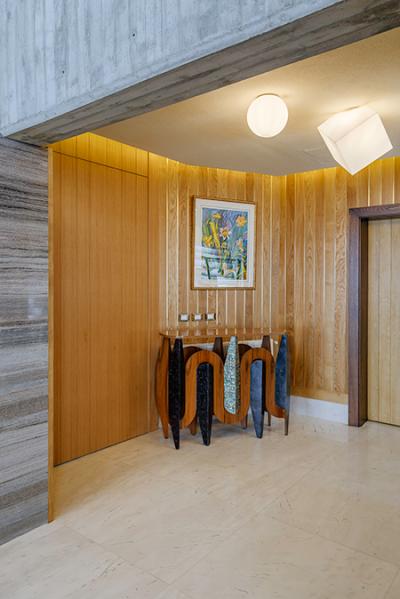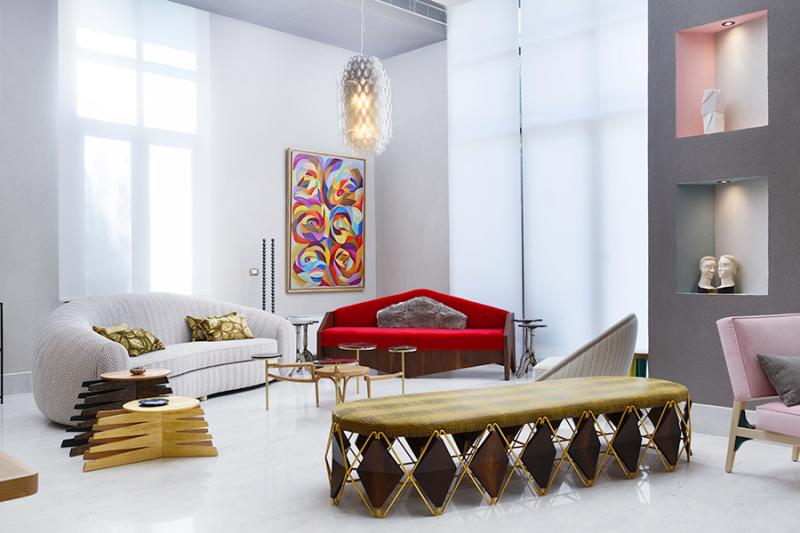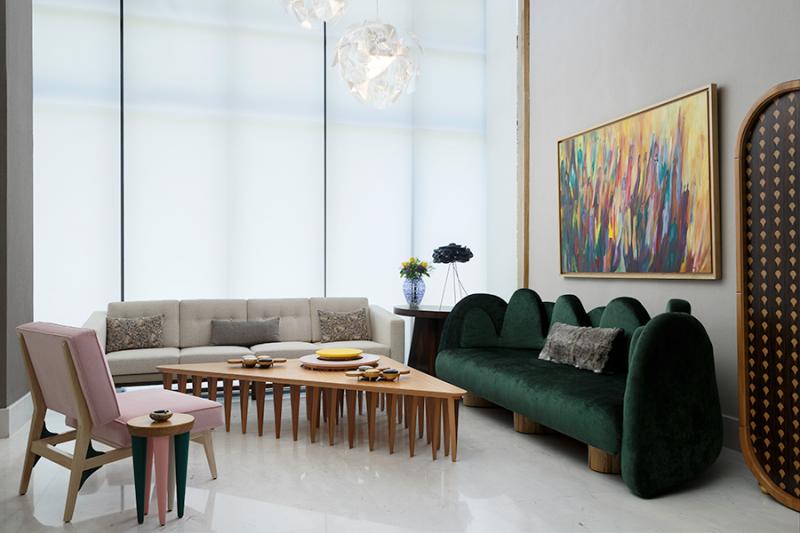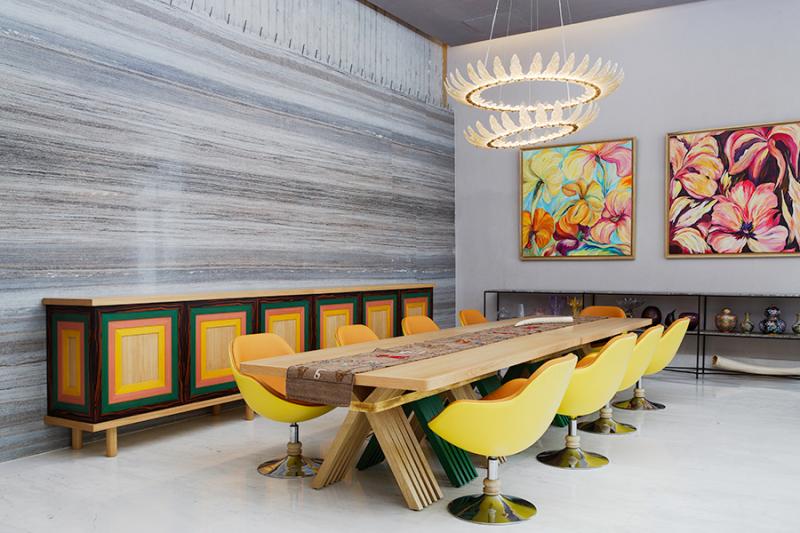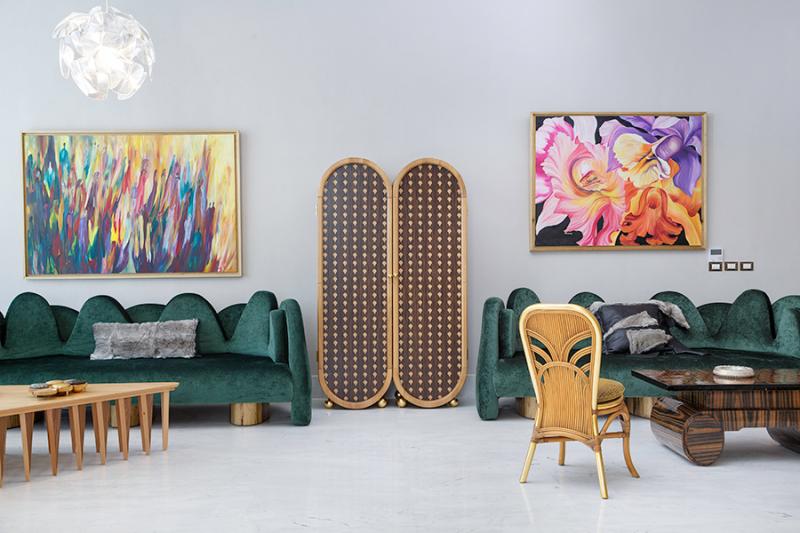Khaled El Mays
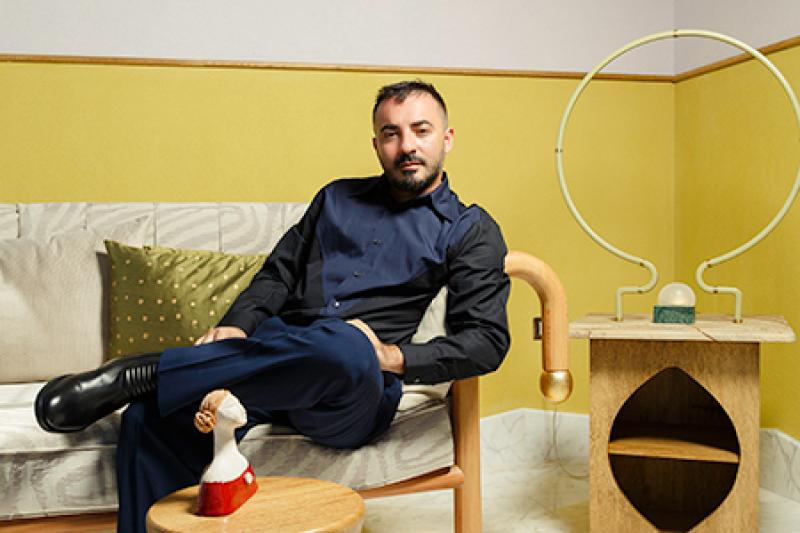
Khaled El Mays
Architectural Digest
2018
The Lebanese designer, known for his experimental take on traditional craft, uses his home outside Beirut
Ias a laboratory for new ideas
t was at a public art exhibition in Beirut that designer Khaled El Mays first looked—really looked—at the Fishawy chair, an artisanal riff on Thonet’s iconic bistro seats, ubiquitous across the Mediterranean and Middle East. “The artist had painted them gold with black cal- ligraphy and distorted the proportions,” recalls El Mays
of the bastardized versions on display. “I realized nobody had successfully made this chair into something that could actually live and evolve.”
So he created his own mutant take on the 19th-century classic, enlisting local artisans to craft a chair that doubled as a valet, using French oak, brass, and rattan. “I deformed the chair in order to give it a new function, while still totally respecting the qualities of the original,” he reflects of the piece, which debuted at Design Days Dubai in 2016.
Since then, El Mays—who studied architecture at the American University of Beirut before getting his MFA at
Pratt—has applied this same philosophy to projects large and small. During Salone del Mobile in April, he introduced a suite of furniture at Milan’s Nilufar gallery that modernized wicker, an age-old tradition of weaving rattan that originated in the Middle East. Christened Palmea and realized by Lebanese craftsmen, the collection comprises tables, cabinets, and more that incorporate colorfully painted bamboo and rattan.
Examples of these pieces can be found in El Mays’s most recent project: the new home that he designed, built, and decorated for himself in Chtaura, a small town in the Beqaa valley where he grew up, just outside Beirut. Here his Fishawy valets are stationed in each bedroom and the entry hall, while a nightstand and laundry basket from his Palmea series reside in his brother’s room. And in the living room you can spot his very first furniture design, the carved-wood Rhizomes table, inspired by the horizontal plant-root form.
If his home serves as a showcase, it’s also his place to exper- iment, galvanizing production on a slew of ideas he has kicked around. “The green undulating couch in the main reception area has evolved into a new series for Nilufar,” he reveals. “And the inlaid sideboard and nightstands might evolve into another one. In this house you see bits and pieces of all of my differ- ent aesthetics assembled into an environment. It’s my DNA.” khaledelmays.com —HANNAH MARTIN

